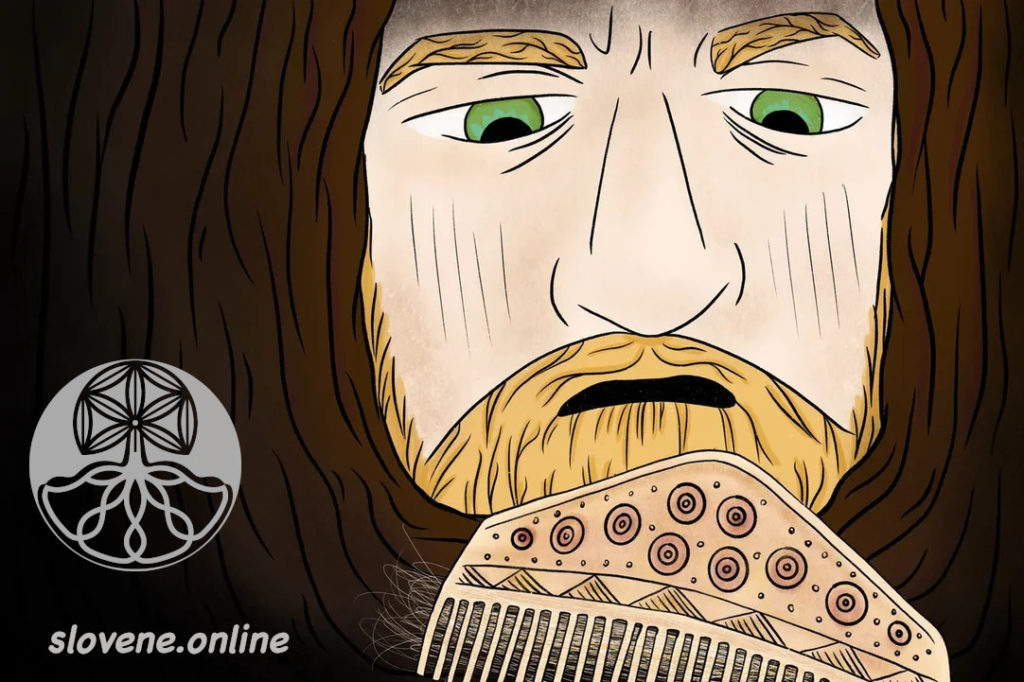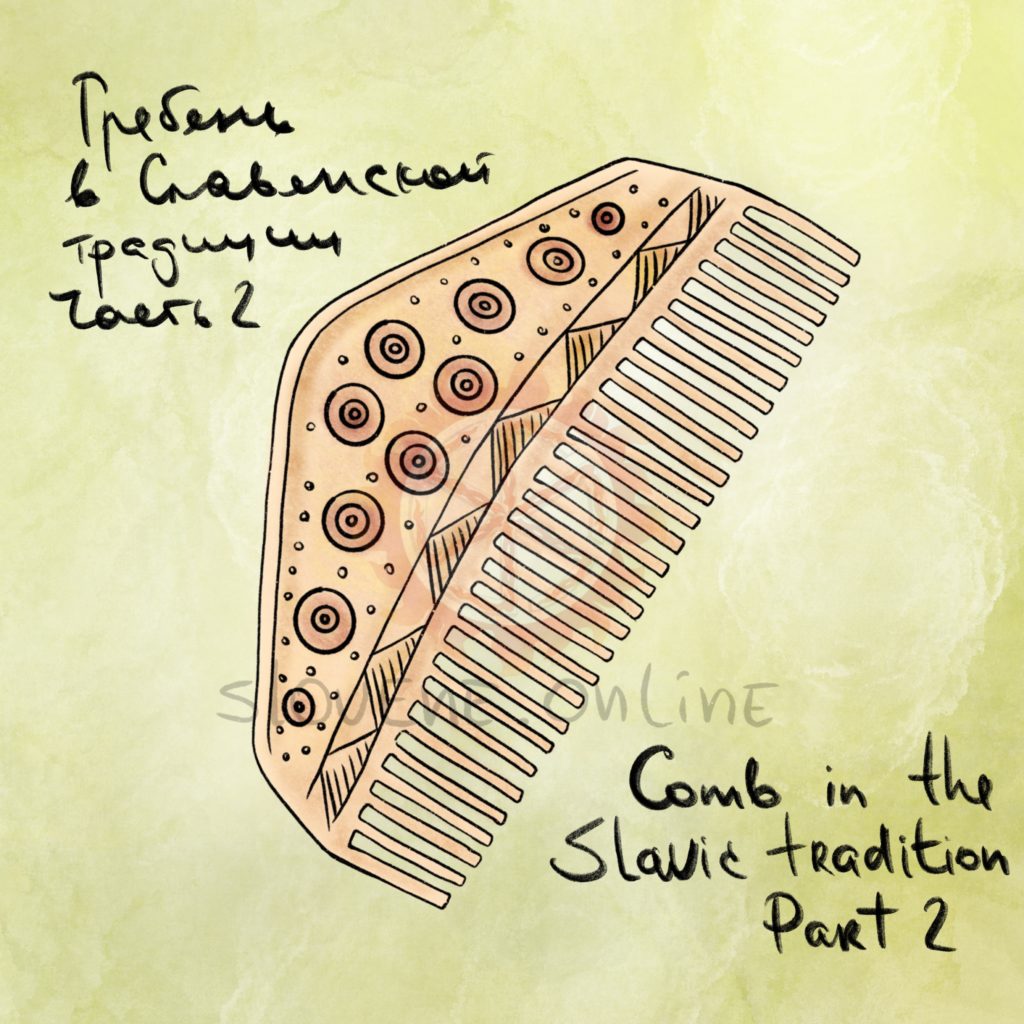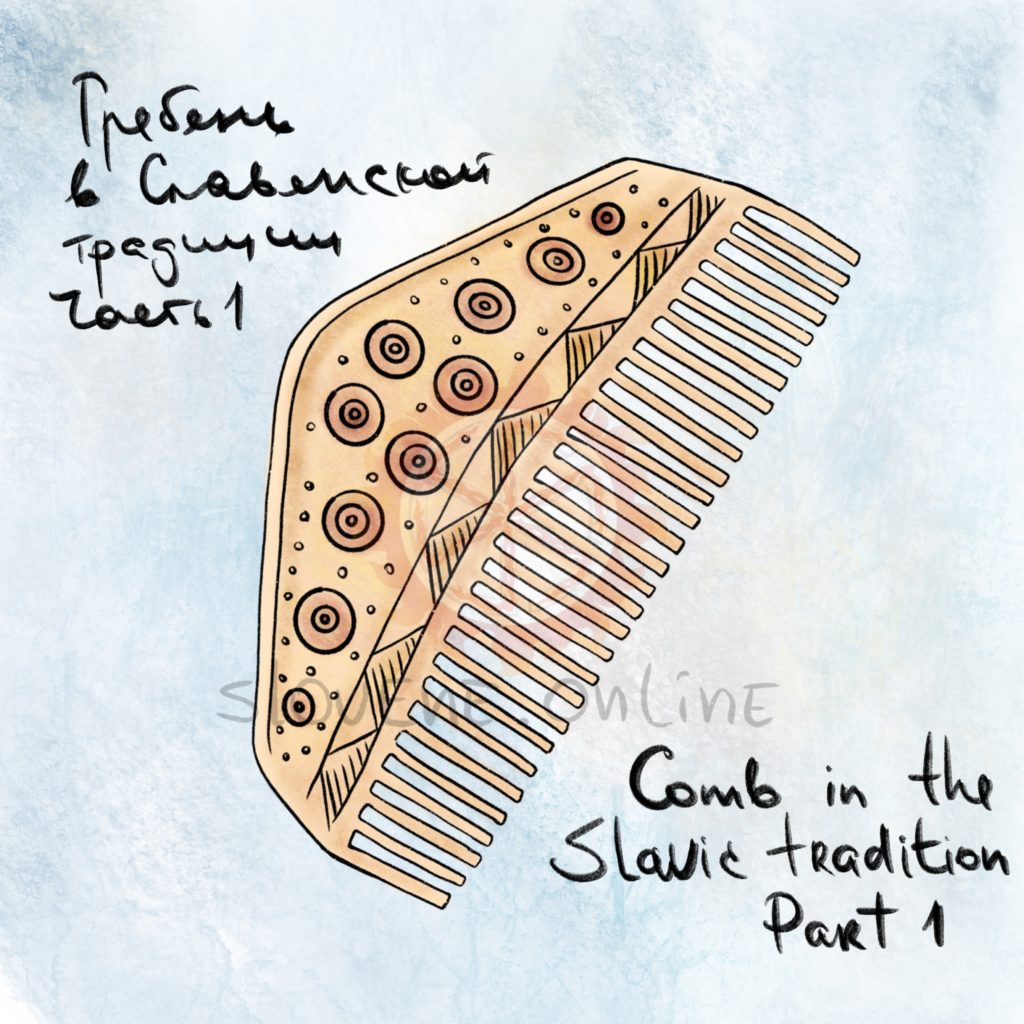And here is the answer for our previous post! But what is happening here and why? Any guesses? There is a hint in one of the previous posts about Slavic traditions from last year 😉

And here is the answer for our previous post! But what is happening here and why? Any guesses? There is a hint in one of the previous posts about Slavic traditions from last year 😉

Slavs also used the comb in reproduction magic. Going to the first seeding, the Serbs and Macedonians would put it in a bag of seeds or stirred seeds prepared for sowing with it, so that the spike of wheat / rye would have “frequent grains” like the teeth of a comb. The Croats, before taking the cattle for sale, combed it and pronounced: “Koliko zubaca, toliko kupaca” (“How many teeth, so many buyers”). After combing the sheep, the Russians threw the broken comb and the wool back into the sheepfold so that animals would have more wool.
We continue to familiarize you with the customs and beliefs of the ancient Slavic people, while working on the animated fantasy comic book series. In such posts, as if jumping forward in time, we shed light upon and help to understand the events that will occur in our story … 😉
All Slavs used the comb as a talisman against evil spirits, curses, diseases, wild animals, etc. The Serbs protected newborns from Veshtitsa (Вештица – Witch) and other demons with one or two combs, put on both sides of a child head. Therefore, Veshtitsa would prick herself if tried to approach the baby. The Eastern Slavs used to put a comb or a spindle in a cradle so that a baby could sleep peacefully.
A comb was also used for hexing others. The Serbs for example, would put two combs on both sides of the road on the wedding day, and when the young couple passed, they connected and hid those combs: after that, the couple would have arguments for all their life. The Russians of the Novgorod region believed that sorcerers performed all their malicious actions with the help of a comb. The Macedonians believed that women who had violated the ban on work in the evenings, were drowned in the water or brushed with large combs by Karakondzhulas (Караконцол). Interestingly, the comb is an attribute of many mythological creatures: goddesses (boginka), mermaids, female water spirits, etc., who usually combed their long hair in a story.
Source: “Slavic Antiquities” – encyclopedic dictionary in 5 volumes by Institute for Slavic Studies of the Russian Academy of Sciences.

A comb was traditionally regarded by Slavs as sharp, pricking apotropaic object as well as female and erotic symbol. Due to its frequent teeth and contact with hair, it was also endowed with producing properties.
We continue to familiarize you with the customs and beliefs of the ancient Slavic people, while working on the animated fantasy comic book series. In such posts, as if jumping forward in time, we shed light upon and help to understand the events that will occur in our story … 😉
According to Bulgarian customs, the girl hid her comb from strangers, since it could be used to hex the owner. Thus, after combing, she would immediately wrap the comb in a towel and put it in a secret place. In Belarus, people were not allowed to leave the comb in an open place, believing that this could cause trouble. In Poland, if a comb fell on the floor, people would guess which visitor to expect – frequent or rare (depending on the frequency of the comb teeth).
In girls’ divination and in love magic, the comb symbolized a girl or was an attribute of a groom. In the Vologda region, the girls hung a comb outside the window and chanted: “My betrothed, come and comb your hair!”. In Polesie region, on Kupala night, the girls made a comb of “ant oil” and combed guys with it to bewitch.
“The Catalogue Of Rudolph’s Magic” (13th century) says about divination ritual using a comb by Slavs in Silesia: «They prepare water and put it together with a comb, oats and a piece of meat with these words: “Come, Satan, take a bath, comb your hair, give oats to your horse, and meat to your hawk, and show me my husband”». In Eastern Serbia, around a new year, girls would put fragments of a comb, a piece of coal, soot, a mirror, etc. under the shards: whoever pulls out a comb fragment will get a groom “with teeth”. The comb was given to the bride at a Russian wedding; among the Serbs, the mother-in-law always gave the daughter-in-law a comb along with other gifts.
To be continued…
Source: “Slavic Antiquities” – encyclopedic dictionary in 5 volumes by Institute for Slavic Studies of the Russian Academy of Sciences.
